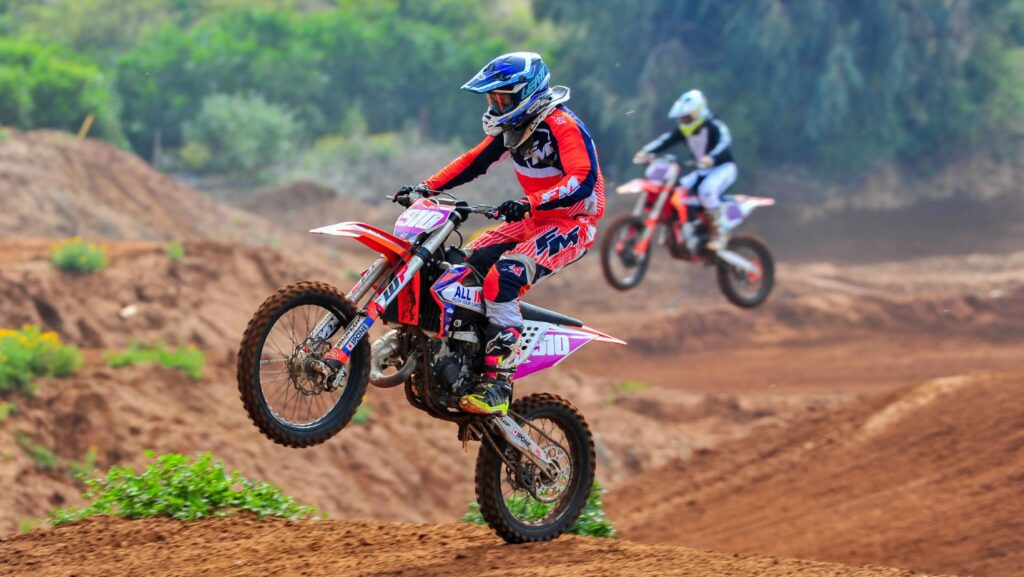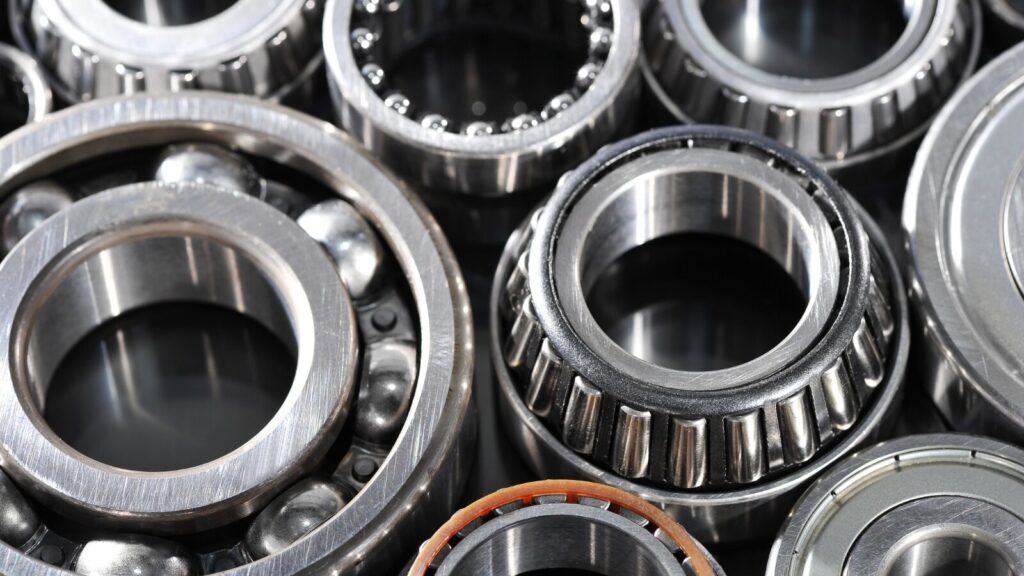
Riding a motorcycle offers a sense of freedom and adventure. However, it also comes with significant risks. To mitigate these risks, wearing the right safety gear is crucial. Proper safety gear can protect you from severe injuries and make your ride more enjoyable. In Asheville, NC, motorcycle accidents are a concerning issue.
According to a publication by the North Carolina Department of Transportation (NCDOT[L1] ), in 2020, there were 3,409 reported motorcycle crashes in North Carolina. These crashes led to 2,684 injuries and 176 deaths.
Moreover, cities in North Carolina, including Asheville, have seen a notable number of motorcycle accidents. These facts highlight the importance of wearing the right safety gear.
Why is it Important for Motorcyclists to Keep Safety Gear
Safety gear is crucial for motorcyclists because it provides essential protection during rides. Helmets, for example, are vital as they protect your head and can significantly reduce the risk of severe head injuries in an accident. Jackets, gloves, and boots are designed to protect your body from abrasions, cuts, and impacts. Wearing proper safety gear can mean the difference between minor injuries and severe, life-threatening ones. Always prioritizing safety gear not only ensures a safer ride but also contributes to a more enjoyable and confident riding experience.
Despite wearing helmets and protective gear, they can suffer serious injuries in crashes with larger vehicles. Accidents can happen even if you’re a careful rider, often due to other drivers’ negligence. If you’re involved in such an accident, you may be able to file a lawsuit for compensation.
If you’ve been injured or lost a loved one in a motorcycle accident due to a dangerous or distracted driver in Asheville, it’s crucial to seek legal assistance. Consulting with professional personal injury lawyers, such as Sink injury lawyers in Asheville, NC, can help you navigate the legal process and potentially receive compensation for your losses.
-
Helmet
Wearing a helmet is the most critical aspect of motorcycle safety. It protects your head in case of an accident and can significantly reduce the risk of severe injury or death.
Types of Helmets:
- Full-face: Offers the most protection by covering your entire head and face.
- Modular: Can switch between full-face and open-face, providing flexibility.
- Half-helmet: Provides limited protection, covering only the top of your head.
Features to Look for:
- DOT certification: Ensures the helmet meets safety standards.
- Fit: A proper fit is crucial for effectiveness; the helmet should be snug but comfortable.
- Ventilation: Good airflow helps keep you cool and comfortable during rides.
-
Riding Jacket
A good riding jacket is more than just a piece of clothing; it’s a critical part of your safety gear that protects you from various injuries. These jackets protect against abrasions, cuts, and impacts.
Materials:
- Leather: Durable and offers excellent protection but can be hot in warm weather.
- Textile: Lightweight, often waterproof, and provides good protection with added armor.
Key Features:
- Armor: Look for jackets with built-in armor at the elbows, shoulders, and back.
- Ventilation: Essential for comfort during long rides in varying weather conditions.
- Fit: It should be snug enough to keep the armor in place but comfortable for movement.
-
Riding Pants
Just like jackets, riding pants are essential for protecting your lower body during a ride. They offer protection from abrasions, impacts, and weather conditions. Regular pants do not provide the necessary protection against road rash and effects.
Materials:
- Denim: Reinforced with Kevlar or other protective fibers.
- Leather: Offers excellent protection but can be less comfortable in hot weather.
- Textile: Often waterproof and breathable, with built-in armor for protection.
Features to Consider:
- Armor: Should have padding or armor in the knees and hips.
- Fit: Must be comfortable and allow for full range of motion.
- Weather resistance: Waterproof or water-resistant pants are beneficial for riding in various conditions.
-
Gloves
Gloves are crucial for protecting your hands, which are often exposed to the elements and are usually the first to hit the ground in an accident.

They protect against abrasions, impacts, and weather conditions.
Types of Gloves:
- Summer gloves: Lightweight and breathable for hot weather.
- Winter gloves: Insulated and waterproof to keep hands warm and dry.
- Waterproof gloves: Essential for rainy conditions, keeping hands dry and providing a good grip.
Important Features:
- Armor: Look for gloves with protective armor on the knuckles and palms.
- Grip: The grip should have an excellent grip to ensure control over the motorcycle.
- Fit: Should be snug but not too tight, allowing for comfortable movement and control.
-
Boots
Proper riding boots are crucial for protecting your feet and ankles, providing stability, and enhancing control over your motorcycle. Moreover, they protect your feet and ankles from impacts, abrasions, and weather conditions. They also offer better grip and control over your bike’s pedals.
Types of Boots:
- Touring: Designed for long-distance comfort and protection.
- Racing: Built for high-performance and track use, offering maximum protection.
- Adventure: Versatile boots suitable for both on-road and off-road riding.
Key Features:
- Protection: Look for boots with reinforced toe and heel areas, ankle protection, and sturdy soles.
- Comfort: Ensure the boots fit well and are comfortable for long rides.
- Waterproofing: Essential for riding in wet conditions, keeping your feet dry and warm.
-
Eye Protection
Protecting your eyes while riding is essential for safety and comfort. Proper eye protection helps you see clearly and shields your eyes from debris, wind, and UV rays.
Options:
- Goggles: Provide complete protection and are ideal for off-road riding.
- Visors: Attached to helmets, offering integrated protection.
- Sunglasses: Useful for blocking UV rays and reducing glare.
Features to Look for:
- UV protection: Shields your eyes from harmful ultraviolet rays.
- Anti-fog: Prevents fogging in varying weather conditions.
- Fit: You should be comfortable and secure without obstructing your vision.
-
High-Visibility Gear
Wearing high-visibility gear can significantly increase your visibility to other motorists, reducing the risk of accidents.

High-visibility gear makes you more noticeable, especially in low-light conditions, and ensures your safety on the road.
Types:
- Vests: Lightweight and can be worn over any jacket.
- Jackets: Incorporate reflective materials and bright colors.
- Helmets: Wear helmets with reflective elements or bright colors.
Tips for Increasing Visibility:
- Reflective tape: Apply reflective tape to your gear and bike.
- Bright colors: Opt for neon or bright-colored gear to stand out.
- Lights: Use additional lights or reflective accessories to enhance visibility.
Conclusion
Investing in essential safety gear is a must for every motorcyclist. Helmets, riding jackets, pants, gloves, boots, eye protection, high-visibility gear, body armor, and communication devices all play a crucial role in ensuring your safety on the road. These items not only protect you from injuries but also enhance your riding experience by providing comfort and functionality.
As you accumulate more gear, it’s important to have space to store everything properly when it’s not in use. A self-storage unit can be a great solution for motorcyclists looking to keep their equipment safe and organized.
Remember, even with the best safety gear, accidents can happen due to others’ negligence. In such cases, it’s important to seek legal advice.



